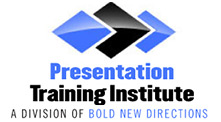Giving a presentation can be daunting enough, but it can be even more overwhelming when the stakes are high. Whether you are pitching to investors, clients, or proposing an idea to colleagues, engaging the audience and demonstrating value are paramount. A well-executed demo not only captures attention but also builds credibility and can be a powerful tool for showcasing the value of your product or service. However, live demos don’t always come without risk. Successfully implementing them requires thoughtful planning and strategic placement. Consider the following tips for effectively integrating live demos into a high-stakes presentation.
1. Practice, Practice, Practice
Make sure you spend plenty of time practicing your demonstration before the actual presentation. You want to do several run-throughs to be sure everything goes smoothly. Familiarize yourself with any technology, software, and equipment that will be used during the demo. Practice troubleshooting common issues so you can be fully prepared should something go wrong.
2. Keep it Simple
When planning for a live demo, focus on showcasing the most important features or functionalities of your product or service. Keep it concise and to the point to avoid overwhelming or confusing your audience. Highlight the key benefits and advantages, as trying to do too much can take away from your impact.
3. Plan for Contingencies
Despite your best efforts and plenty of practice, technical glitches or unexpected issues may still arise. Have a backup plan in place in case something goes wrong, such as a pre-recorded demonstration or detailed slides that illustrate your demonstration. Be prepared to adapt and pivot if needed.
4. Engage the Audience
A live demo is a great opportunity to interact with the audience and peak their interest. Encourage them to participate, ask for volunteers, and also ask for feedback during the demo to make it more engaging.
5. Provide Context
Before going straight into a live demo, set the stage by providing context and background information about the product or service you will be showcasing. Explain what you will be doing, why these functions are important, and how they can benefit the audience. Help your audience understand the value of your proposition.
6. Follow-Up
After a live demo, you should always follow up with the audience to answer any questions or gather feedback. Provide resources that further explain the product or service and how it can be utilized. You should also provide access to where and how the audience can purchase the product or sign up for the service.
Integrating a live demonstration into a high-stakes presentation is a great way to impress the audience and create a memorable experience. When executed well, it can take your presentation from informative to unforgettable. For more tips and strategies on how to incorporate live demonstrations into a presentation, consider enrolling in one of our Presentation training courses. These courses can help you develop strategies for making the most of your high-stakes presentations. Call today to learn more about our course offerings!
